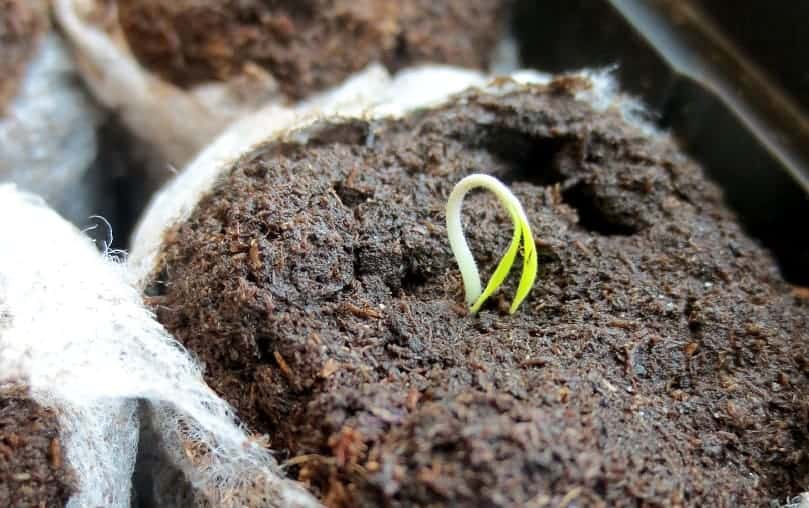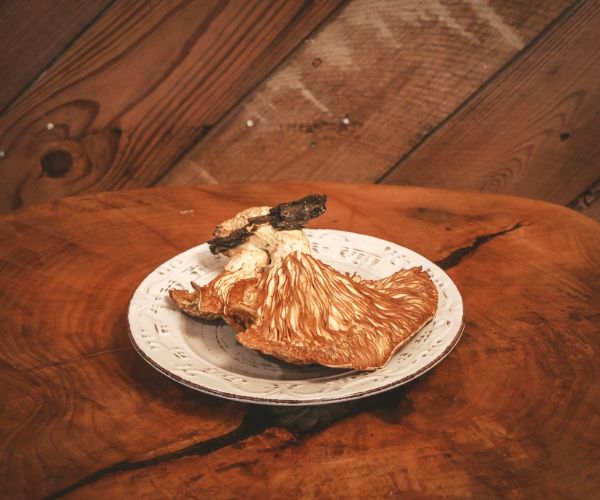If you think of yourself as a rugged individual with a pioneering spirit that requires few modern-day luxuries, then living off the land might be for you. For those who live off the land, a good majority of their basic needs are met by Mother Nature: food, water, shelter, and heat, for example. And, of course, land.
Obviously, though, you need a little more than a plot and a dream to make living off the land work. So before you make the leap, let’s take a look at what living off the land means and what you need to make a success of it.
You Need Land
First things first, you need land in order to live off of the land. Your land should provide as many resources as possible, not the least of which is water.
Read: How much land do you need to be self-sufficient
Your plot of land should be able to produce food, although that can be accomplished in many different ways:
- Hunting
- Fishing
- Foraging
- Fruit trees
- Nut trees
- Cacti
- Gardens
- Poultry
- Livestock
Consider your needs when choosing a plot. One with a freshwater source will go a long way.
Your land should also provide resources that can support your infrastructure, particularly your dwelling. The most obvious example is wood, which can contribute to cooking, heating, and building materials.
You Need Food
Living off the land means no more grocery stores. You must develop adequate skills to put food on the table. The more avenues you have for food production, the better, but don’t bite off more than you can chew.
Producing your own food is a lot harder than it looks, especially if you’ve never done it before. The learning curve is steep, so don’t spread yourself too thin. It’s better to learn one skill set well rather than many skill sets poorly.
There are many ways to produce your own food, but how you do it will depend on your geographical area.
Meat and Poultry
Hunting and fishing are great ways to produce adequate sources of meat. Alternatively, you can raise your own livestock.
Don’t overlook small game that you normally wouldn’t think about. People have been living off small game like squirrels, rabbits, and quail for centuries.
There are also exotic meats, like frogs, snakes, eels, alligators, and the like, that are plausible if they happen to be in your area.
You’ll also need to know how to process and preserve your own meat or pay someone else to do it for you. Skinning and butchering are not for the faint of heart. This is especially burdensome when you have young children involved who often view animals as pets.
Don’t forget eggs, which are also a great source of protein. One of the great things about living off the land is learning how to think outside the box. Eggs don’t have to come from just chickens. Many people get their eggs from quail, ducks, geese, and even emus.
Milk and Dairy
You’ll have to learn a thing or two about milking if you want to keep fresh milk around. Cows and goats are the two most common sources of milk production. There’s also a variety of other food items that traditionally come from dairy animals.
Survivalists frequently learn how to make their own cheese, yogurt, butter, kefir, and even buttermilk.
Fruits and Vegetables

If you’re not an experienced gardener, you won’t be able to just go out and whip up a garden overnight. Many who are new to the self-sustaining lifestyle often underestimate the challenge of growing enough produce to last a year.
It’s also important to protect your garden because animals like to eat too. Deer, rabbits, raccoons, armadillos, squirrels, moles, groundhogs, and even horses and cows, are notorious for destroying gardens in the blink of an eye.
Your garden requires protection from invasive diseases and insects. You’ll have to get creative if you plan on avoiding herbicides and insecticides.
Weather can also wreak havoc on your garden. Floods, droughts, unexpected freezes, and excessive heat waves can all have a huge impact on the success or failure of your planted foods. As such, you should always have a backup plan!
Proper soil management affects the outcome of your crop distribution. Poor soil results in poor crops, so learn how to keep your soil well nourished. Understanding the importance of adequately rotating your crops and periodically allowing your land to rest is necessary for long-term sustainability.
You’ll need to learn how to harvest, dry, and store your seeds for next year’s crop, as well as which seeds are suitable for storing.
Orchards
Planting your own fruit and nut trees is an option for long-term food production. It usually takes two to three years before fruit and nut trees produce, even longer if you begin from seed, so don’t anticipate any abundant supply for a while.
Finding land with fruit-bearing trees already growing would be ideal, though this will mean a larger upfront investment.
Like gardening, you’re competing with the wildlife when it comes to harvesting. Birds, squirrels, raccoons, bears, and insects are just a few of the critters constantly feasting on your fruit trees, often leaving you with little supply.
Foraging

Foraging is a great way to put food on the table, especially when times are lean. Mother Nature is filled with wild berries (beware of poisonous berries) and vines that produce pleasant-tasting fruits.
Mushrooms are a great option but require a superb skill set for identification since poisonous mushrooms flourish in abundance.
Read:
There are a variety of greens that you can forage and many are highly nutritious. You can even make foraged greens powder from your haul.
Additionally, if you live in a coastal region, you can forage for crustaceans, such as crab, shrimp, oysters, clams, scallions, and periwinkles, that are usually found along shorelines, rock ledges, and reefs.
You Need Water
Water is a must-have for survival, an essential for life! Think of all the ways you use water every day:
- Drinking
- Cooking
- Bathing
- Sewage
- Washing
- Gardening
- Livestock
Not only do you have to consider your source of water, but all aspects of water require plumbing. How will you get your water from Point A to Point B?
Drinking water may also require filtration and/or purification. Wells are quite expensive, and particularly in desert regions, hard to come by.
You must give serious consideration to how you will acquire, store, and use your water. Your life literally depends on it.
You Need Clothing
Except for the occasional nudist colony, clothing is a must-have! Most people are ill-equipped to produce their own clothing, which means frugality is your best friend.
You must learn to mend, patch, and repair your clothing to prevent unnecessary spending. If you have the talent, supplementing your clothing with crocheted, knitted, or quilted items can also help.
Some people intentionally raise animals to produce their own yarn and textiles:
- Sheep
- Rabbits
- Alpacas
- Llamas
- Scottish Highlands
Additionally, many skilled hunters use the hides of their animals to make a variety of garments, rugs, and upholsteries.
You Need Shelter
Where will you lay your head at night? Living off the land requires some protection from the elements, but that doesn’t necessarily have to look like a traditional home.
With an ongoing push toward sustainability, more and more people are choosing environmentally friendly, earthen-type, or minimalistic homes. Many modern-day popularities include ingenious new options:
- Earth berm homes
- Adobes
- Earthbag homes
- Tiny homes
- Yurts
- Railroad containers
- Shed conversions
- Tree homes
You Need Energy and Power
Can you survive without electricity? Once upon a time, people did. Whether people today have that much grit is debatable. Energy needs are also quite variable and subjective.
Some use it very minimally, while others run full-fledged modern-day homes with dishwashers and sprinkler systems. Only you can decide how much energy and power you need, but here are the most common reasons to have a decent self-sustaining power grid:
- Refrigeration
- Heating/cooling
- Hot water
- Cooking
- Laundry
- TV/internet
- Tools
- Lighting
While it is possible to live without many appliances, the trade-off is a much more limited and laborious lifestyle.
You Need a Way to Cook and Heat
Cooking and heating generally go hand in hand and often utilize the same fuel source. Both are necessary to some degree but can be accomplished through a variety of means:
- Electric
- Wood
- Propane
- Kerosene
- Gas
- Charcoal
Each has its own different monetary burden, as well as advantages and disadvantages.
Most people who live off the land typically use fuel types interchangeably, depending on the task at hand. More fuel types generate more options.
You Need Food Storage
Living off the land is often a feast or famine sort of adventure. During times when food is plentiful, most homesteaders try to preserve as much as possible to offset the days when harvests aren’t abundant.
A variety of food storage options exist in the 21st century:
- Root cellars
- Smoking
- Salt curing
- Dehydrating
- Freeze drying
- Sun drying
- Canning
- Pickling
- Fermentation
Some require electricity while others do not. Employing a combination of these methods can help ensure you have food year-round.
You Need Tools
Living off the land requires an intensive amount of labor, and tools always make labor easier. Tools come in varying degrees from simple manual tools to high-end heavy-equipment machinery.
Tools come with a cost but also make life easier and labor quicker and easier. Because tools come in so many different shapes and sizes, you’ll have to contemplate the tools that work best for your lifestyle:
- Hand tools
- Gas powered
- Electric powered
- Battery powered
- Large gas/diesel machinery
You Need Money
Even if you’re living the purest off-grid lifestyle, there are still things in life that will require hard-earned cash. As such, an income of sorts is an absolute necessity.
Regardless of how simple and basic your set up, you’ll still have some financial obligations:
- Property taxes
- Vehicle registration
- Medical needs
- Health insurance
- Fuel
- Building materials
- Veterinarian services
- Repair services
- Ammunition
- Animal and livestock feed
- Toiletries
You can do some calculations to give you an idea of the basic off grid costs. You might be surprised to know you can live quite comfortably below the poverty line.
The more self-sufficient you are, the less money you have to make. But accidents always happen sooner or later. Whether it’s you, your family, or even your animals, there comes a time when everyone has to call in the calvary. So give yourself plenty of reserves.
You Need a Plan
When people think of living off the land, many imagine a simple, easy life. But simple living is anything but simple and easy. Living off the land is a very hard but rewarding lifestyle filled with a lot of hard work. You certainly learn to appreciate the things you have much more.
If you’re ready to leave civilization behind and disappear into the sunset, then start by reading this post about homesteading for beginners.
The transition to living off the land doesn’t happen overnight, but with proper planning and a whole lot of sweat, you can turn your plot and dream into your own personal Shangri-la.

